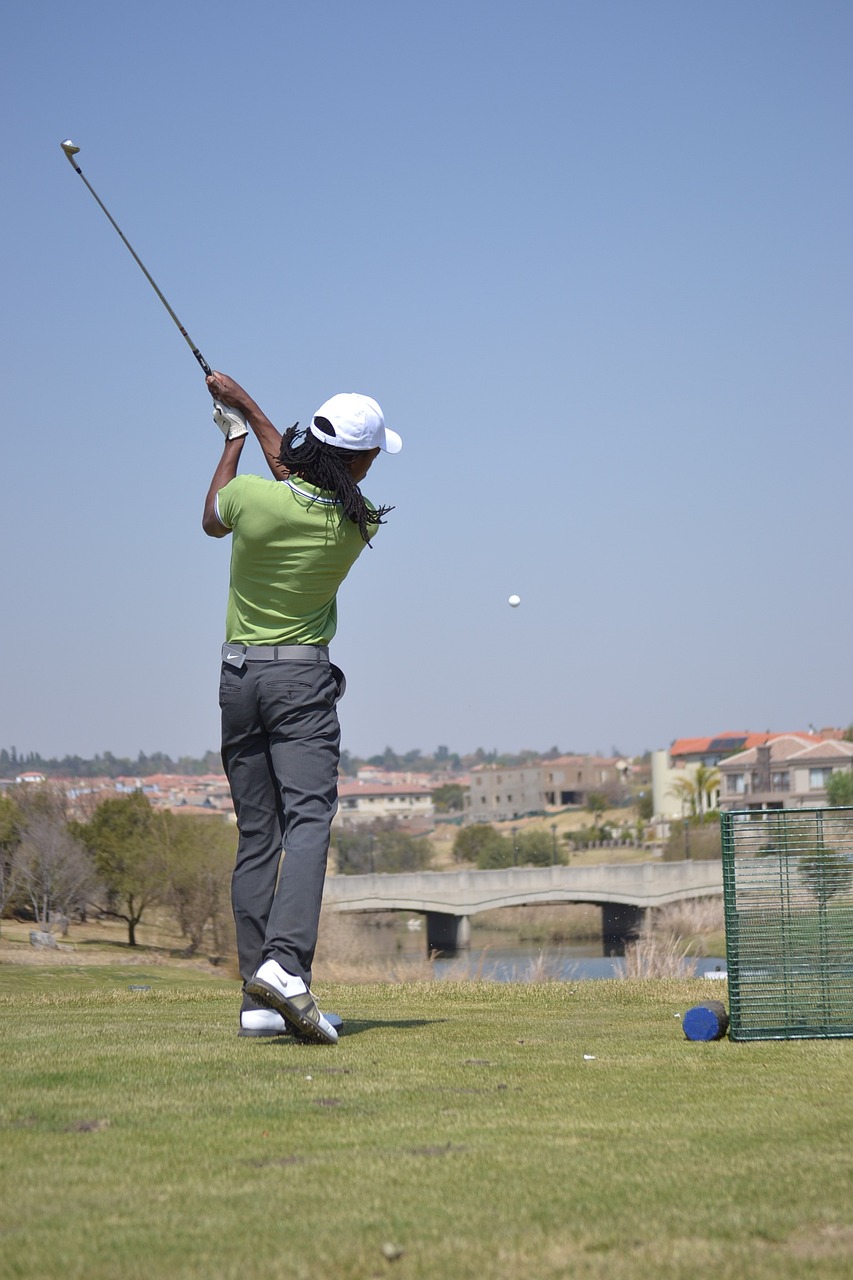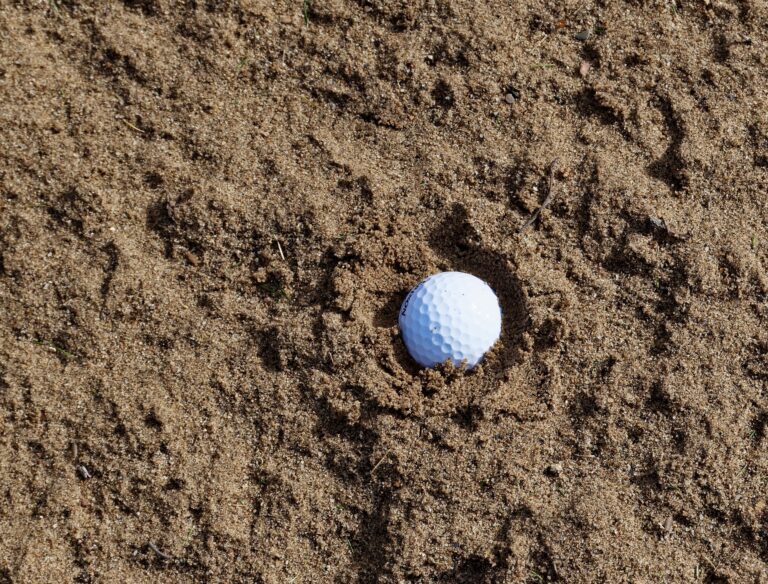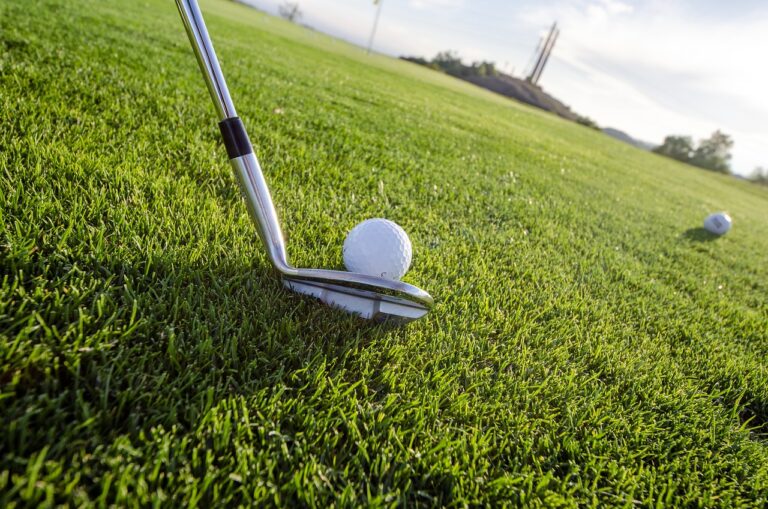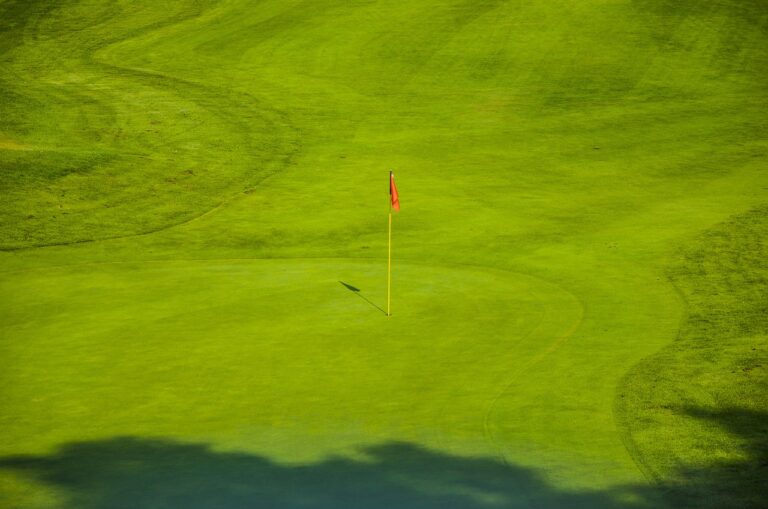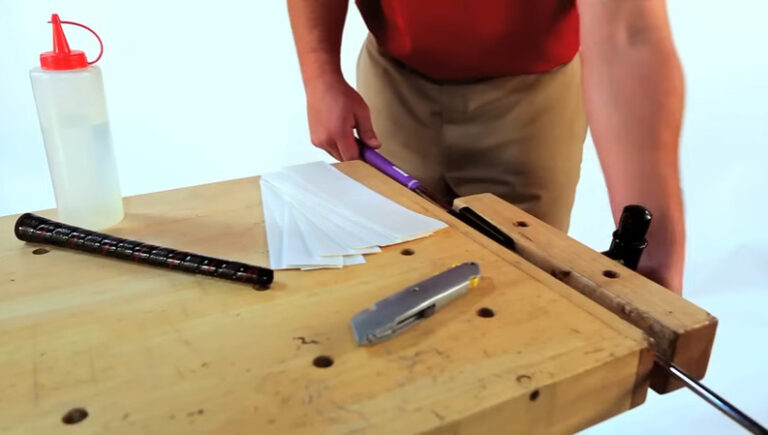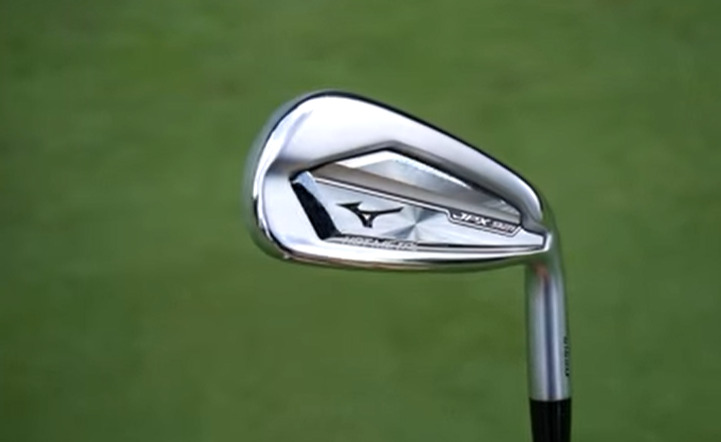How to Hit the Golf Ball Straight.
In this post, I will be sharing some incredible tips on how to hit the golf ball straight, further, and better.
If you’ve ever picked up a golf club and tried to launch a little white ball hundreds of yards across a perfectly manicured lawn, you know that golf is anything but easy. One of the biggest challenges? Hitting the ball straight. But fret not! With the right approach, anyone can master this essential skill.
Understanding the Basics of Golf.
Golf is a sport rich in nuance, and its subtleties can sometimes seem daunting. However, grasping the basics can set a strong foundation for your game.
The Importance of a Proper Grip.
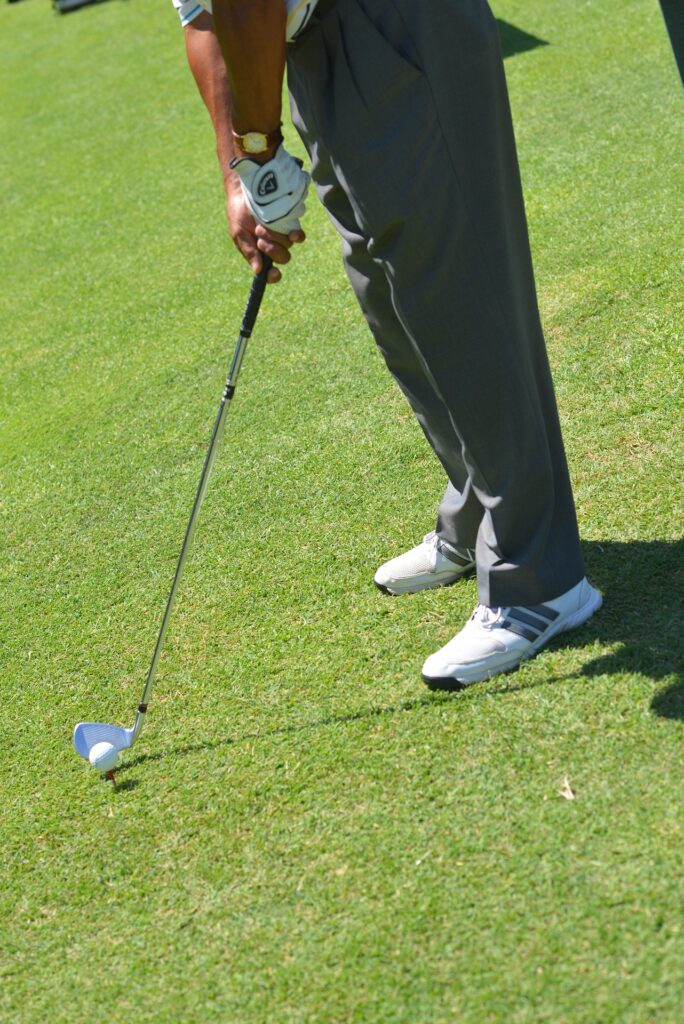
One of the first steps towards hitting a golf ball straight is mastering a proper grip. Your grip is the only connection your body has with the golf club, making it one of the most critical aspects of your swing. A strong, steady grip can lead to a powerful, accurate swing.
Try this: Hold the club like you’re shaking someone’s hand. It should feel firm but relaxed. Your fingers should wrap naturally around the club, and your thumbs should point downwards.
If you’re right-handed, your left hand should be at the top of the club with your right hand directly below it, and vice versa if you’re left-handed.
Choosing the Right Club.
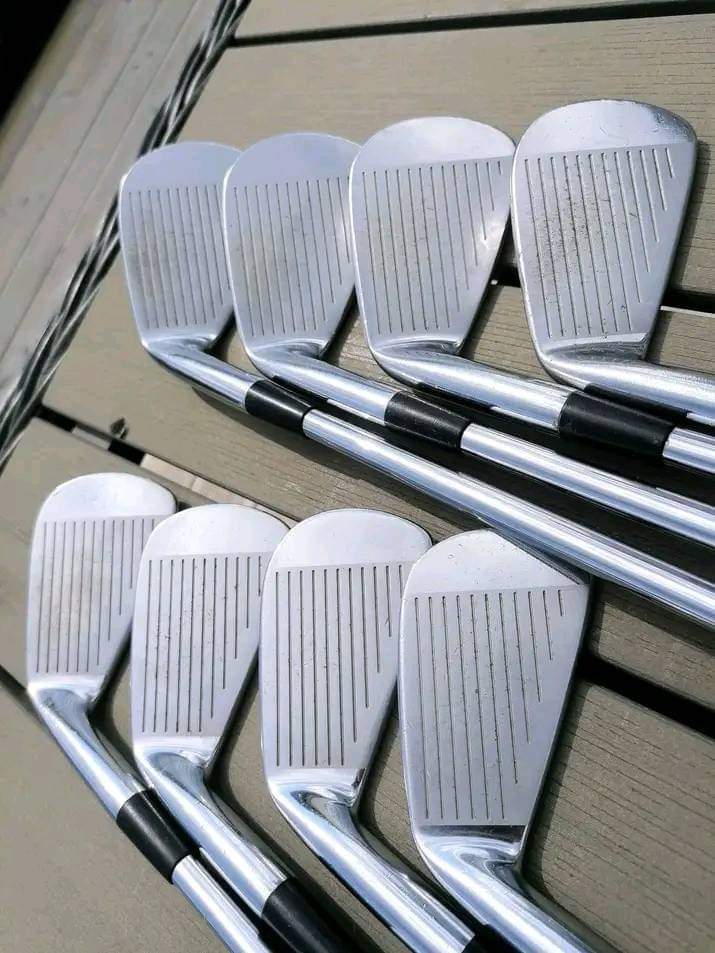
Choosing the right golf club is a bit like picking the right utensil for dinner. Just as you wouldn’t use a spoon to cut a steak, you wouldn’t use a driver to hit a ball a short distance.
Each club has its purpose. For instance, drivers are designed for long-distance shots from the tee, while irons are designed for a variety of shots on the fairway or green, including shorter distances and lofted shots.
So, knowing your clubs and when to use them can significantly affect your ability to hit the ball straight.
The Art of The Swing.
Golf’s beauty lies in the fluidity of the swing. Though it may seem simple, a lot goes into making that perfect stroke. Let’s break it down into three parts: the backswing, downswing, and follow-through.
Mastering the Backswing.
The backswing is all about setting up for the power that’s about to be unleashed. It begins the moment you start moving the club away from the ball. You should aim for a slow, controlled backswing – it’s not about speed here but setting up the right position.
Imagine drawing a large circle in the air with the club. As you move it back, your left shoulder (for right-handers) should turn towards your right knee. This rotation builds up the potential energy that’ll power your swing.
Perfecting the Downswing.
Once you’ve built up that energy, it’s time to let it out. The downswing is when you bring the club down and strike the ball. This motion should be faster than your backswing, driven by the force of your body uncoiling.
Here’s where many golfers go wrong: they try to hit the ball with their arms. Instead, you should aim to maintain the same path you’ve set in the backswing, rotating your body towards the target, and letting your arms follow naturally.
This will help keep the clubface square, vital for hitting the ball straight.
Achieving a Consistent Follow Through.

Once the clubface meets the ball, your job isn’t over. The follow-through, or the final part of the swing, is just as important. It’s all about continuity and maintaining balance.
As you complete your swing, your body should continue rotating until it’s facing the target, with your right foot (for right-handers) up on its toes.
This helps ensure the energy flows smoothly from the top of your swing right through to the end, promoting better accuracy and consistency. Remember, a good swing is a balanced swing, from start to finish.
Correcting Swing Mistakes.
Every golfer, novice or seasoned, encounter swing errors from time to time. The key to improvement is understanding and correcting these mistakes. Let’s explore two common ones: the slice and the hook.
How to Fix a Slice.
A slice is a shot that starts to the left of your target and curves dramatically to the right (for right-handers). This is often due to an outside-in swing path and an open clubface at impact.
To correct a slice, first, ensure your grip is not too weak. Strengthen it by rotating your hands slightly to the right on the club (for right-handers).
Next, check your stance. Try aligning your body more to the left of your target to encourage a more inside-out swing path.
How to Fix a Hook.
The hook is essentially the opposite of a slice. For right-handers, it’s a shot that starts to the right of the target and curves aggressively to the left.
This typically results from an inside-out swing path and a closed clubface at impact.
Fixing a hook involves several tweaks. First, examine your grip. If it’s too strong, try loosening it by rotating your hands slightly to the left on the club (for right-handers). Also, check your alignment. Setting up
with your body slightly more to the right of your target can encourage a more outside-in swing path.
Remember, these changes should be small and incremental. Drastic alterations can lead to more problems than solutions. The key is to practice consistently and patiently for progress.
Proper Alignment for a Straight Shot.
Proper alignment in golf is a fundamental yet often overlooked aspect of setting up for the perfect shot.
Many golfers focus on perfecting their swing but fail to pay due attention to how they position their bodies in relation to the target. This can result in shots that veer off course, even with the most precise swings.
Visualize two parallel lines extending from your body to your target. One line is drawn from the ball to your target, and the other runs parallel to this, along your feet.
These lines are crucial because they guide the direction of your swing and the subsequent trajectory of the ball.
Start by standing behind the ball to get a clear view of your target and the path you want the ball to follow. Once you’ve picked your target, set the clubface so that it’s pointing directly at it.
Now align your body (feet, hips, shoulders) parallel to the target line. Your feet should be shoulder-width apart for balance, and your body should be positioned so that the ball is in line with the inside heel of your forward foot.
A proper alignment, coupled with a good swing, will significantly increase your chances of hitting the golf ball straight. Remember, the swing sends the ball where your body is aimed, not where your eyes are looking.
So, get your alignment right, and you’ll be well on your way to mastering straight shots.
The Importance of Practice.

In golf, as in life, practice truly does make perfect. While understanding the technical aspects of hitting the golf ball straight is crucial, it’s through practice that these techniques become ingrained in your muscle memory and become second nature.
Practicing your golf swing is about more than just hitting balls on the driving range. It’s about repeating the correct movements consistently to reinforce good habits while weeding out the bad ones.
Consistent practice will also help build the physical strength and flexibility needed for a powerful, accurate golf swing.
Start by focusing on one aspect of your swing at a time. Perhaps you’re working on perfecting your grip, or maybe you’re trying to improve your backswing. Whatever the focus, repetition is key.
Remember, it’s not about hitting 100 balls in a row; it’s about hitting each ball with purpose and intent.
However, it’s also crucial not to overdo it. Just as over-practicing can lead to burnout, it can also lead to overuse injuries. Be mindful of your body and give it ample time to rest and recover.
Finally, consider seeking professional help. A qualified golf instructor can provide personalized feedback and tailor practice sessions to your specific needs. They can point out any mistakes you may not realize you’re making an offer tips for improvement.
Remember, golf is a game of patience. Improvement won’t come overnight, but with consistent, mindful practice, you’ll see steady progress in your ability to hit the golf ball straight.
Advanced Techniques
Once you’ve mastered the basics of golf and you’re hitting the ball straight with more consistency, you might be ready to explore some advanced techniques to further hone your skills.
Let’s take a look at how technology can aid your training and how professional advice can give you an extra edge.
Using Technology to Improve Your Game.
In our modern world, technology has permeated every aspect of our lives, and golf is no exception. Various devices and software can help you analyze and improve your game.
For instance, golf simulators allow you to practice in a variety of virtual golf courses from the comfort of your home or a local indoor facility. These advanced systems can provide you with detailed data about each shot, such as ball speed, launch angle, spin rate, and more.
Another tool to consider is a swing analyzer. These devices, typically attached to your club or your glove, capture data about your swing, which can be invaluable for spotting flaws and tracking improvements.
Incorporating Pro Tips.
In addition to technology, you can also gain advanced knowledge by learning from professional golfers. These experienced players have spent countless hours perfecting their game and have likely faced (and overcome) the same challenges you’re dealing with.
Watch golf tournaments and pay attention to the professionals’ technique. You can learn a lot from their grip, posture, swing, and even their pre-shot routines. Also, consider reading golf books or subscribing to golf magazines that often feature pro tips.
Lastly, consider taking a lesson from a professional golf coach. They can provide personalized advice based on your specific strengths and weaknesses.
Remember, becoming a great golfer is a journey, and there’s always something new to learn, no matter how advanced you become. So, keep practicing, stay open to new techniques, and most importantly, enjoy the process.
FAQs About hitting your golf ball straight.

What is the best way to improve my swing?
Practice is key. Additionally, consider seeking professional coaching or using swing analysis tools for personalized feedback.
How do I choose the right club for a shot?
Distance to the target and the shot’s required precision play a significant role in club selection.
How can I fix a hook or a slice?
Making minor adjustments to your grip and alignment can help correct these issues.
How does grip affect my shot?
Your grip directly influences clubface orientation at impact, affecting shot direction and curve.
How important is alignment in golf?
Alignment is critical. It ensures that your body, club, and target are in sync, promoting straighter shots.
Conclusion.
Hitting the golf ball straight is a combination of the right grip, proper alignment, mastering your swing, and practice. While it might feel challenging at first, with time, patience, and persistence, you’ll find yourself consistently driving straight shots down the fairway.
Remember, golf is a journey, not a destination. So, enjoy each step along the way.

